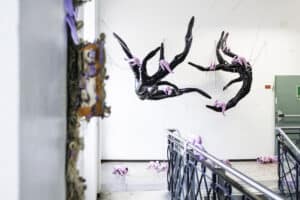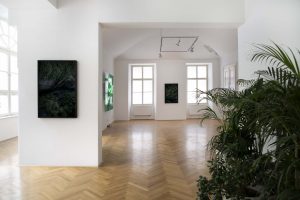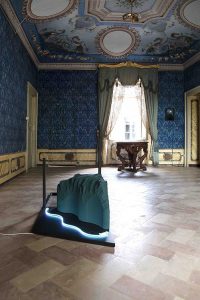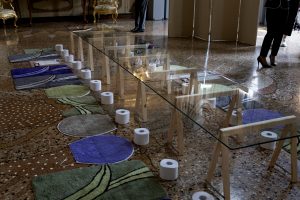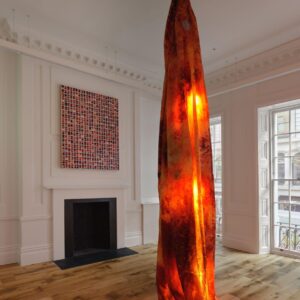A Plus A just opened ‘Armor‘, the solo-show by recent graduate Maddalena Tesser. The artist presents a series of new paintings which she created directly in the gallery. This new space gave her the chance to experiment with large scale paintings, exhibited here among tiny creations. Each work narrates a unique fragment of the universe, yet as a whole, they create a continuous dialogue.
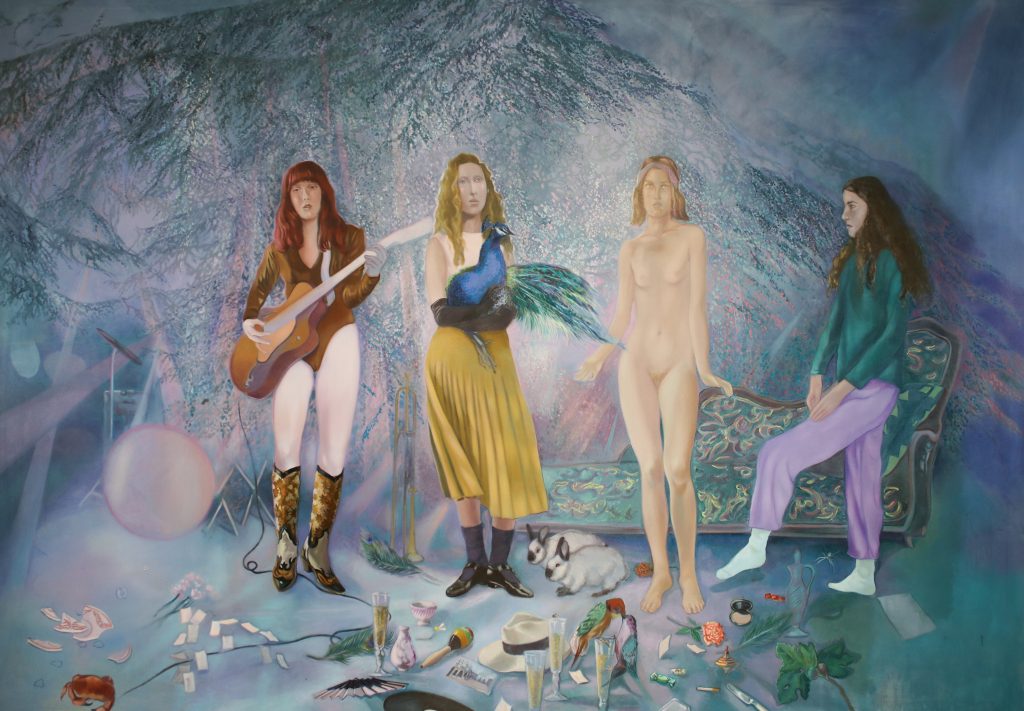
The spectator is immediately catapulted inside of the artist’s interiority. Each painting has its story, it narrates a microcosm which conjuncts the real with the dreamed of. Suite might appear, at a very first glance, like a plausible scenery, most probably a concert. Yet, suddenly, a series of details pierce our consciousness, confusing this reality and offering a new one, more introspective. Why is one of the women naked, and one looks ready to go to sleep, in the midst of a concert? Why are there a broken plate, a crab and other seemingly random objects scattered on the lower side of the painting? And, most of all, where are we? In the depths of the ocean or on top of a hill?
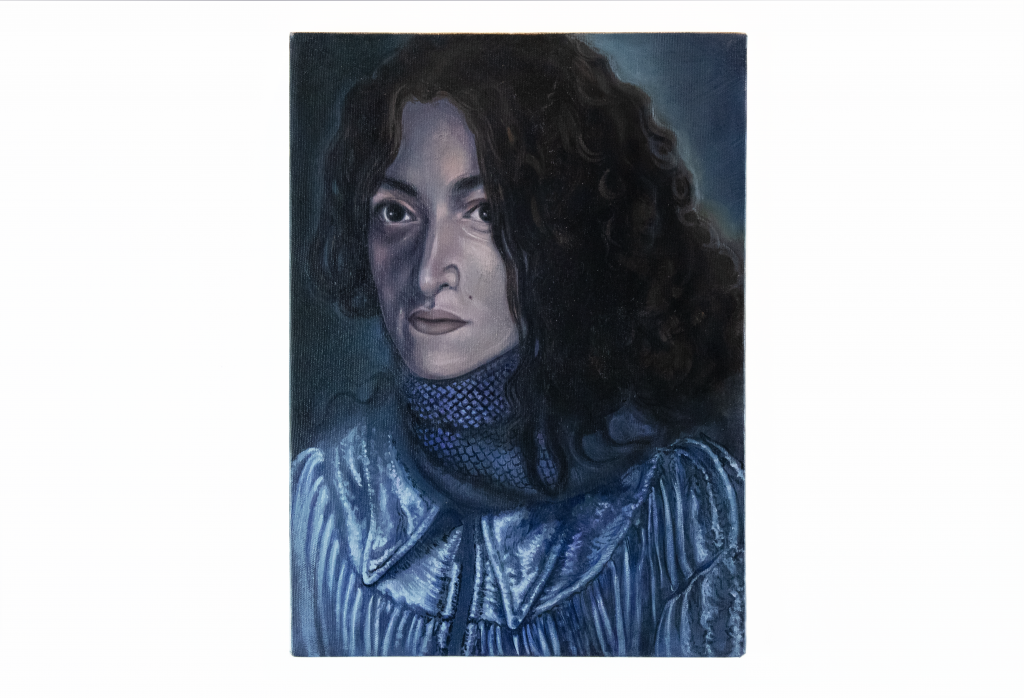
The dream-like quality of the atmosphere, enhanced by the purple and green tones imbuing the air, does not hinder a visceral psychological exploration of the characters. Each woman represented, each animal, object, colour gives off a different emotion. This elaborate study of psychical traits becomes even more evident in the small portraits on the upper floor of the gallery. The gazes of the women portrayed there are so penetrating to be enrapturing. They invite the beholders in capturing them inside of their interior world. Yet, at the same time, they block the gaze impeding a full immersion.
The painter herself describes her process as the ‘creation of an interior world where the spectator is invited to enter and, contemporaneously, is held on the edge.’ These women, indeed, are immersed into an otherworldly atmosphere, impossible to collocate into a specific time or space. They do draw the spectators in, but they are not looking straight at them. It is their enigmatic presence alone which keeps visitors glued to the paintings.
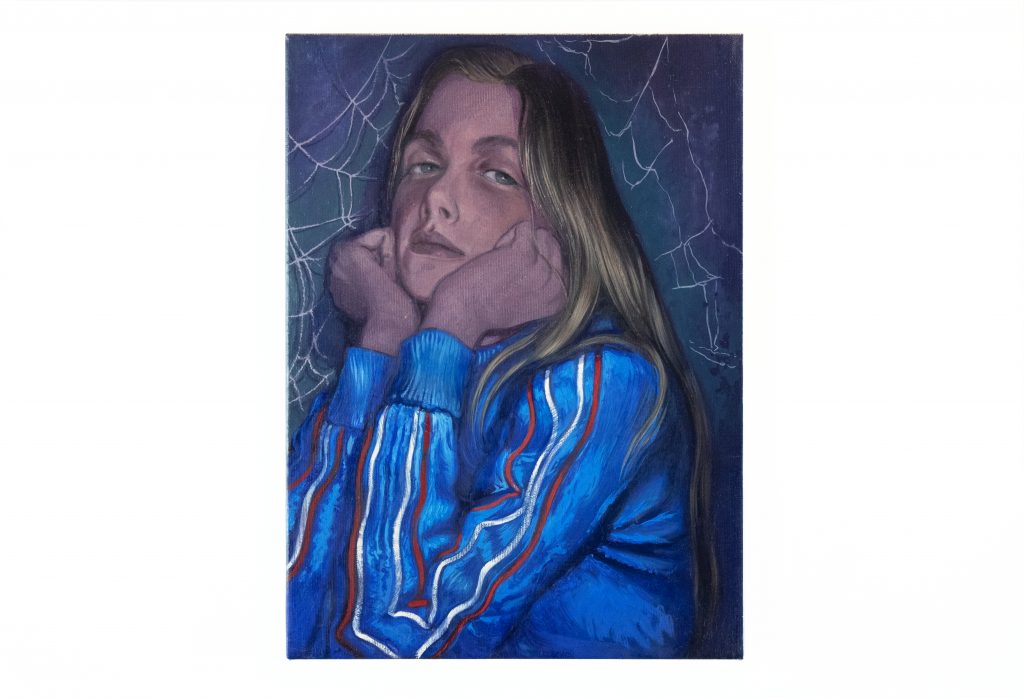
Bored, lost, disenchanted, waiting… they almost seem as the reincarnation of George Simmel’s Blasé, only now the figures look lost for an absence of stimuli, rather than because of an over-stimulation. That is also why they resist a definite explanation or definition, why they look past the spectator towards an indefinite space, why they find refuge in an ‘other’ space.

In the larger paintings the presence of ‘unfinished’ parts enhances this feeling of ambiguity and contrast between reality and imagination. In a work such as Lo Spettacolo e Nulla (2021) there is a continuous tension between detail and vagueness. The meticulous brushstrokes that characterise the braids of the girl on the left hand-side contrast with the other female figure, well defined for the top part of her body, but left unfinished, hazy at the bottom. Her legs, greyish, opaque seem non-corporeal, as if they were made from the same substance fo the trees on the background.

There is a strong and powerful mechanism of citations at play in many of the paintings exposed. Tesser’s Suite clearly and unmistakably calls to mind Felice Casorati’s Le signorine (1912). There is the same gathering of four women, of which the second from the right is naked; the assemblage of random objects on the floor is also quite similar in the two works, especially the hand-fan; finally, there’s a similar use of contrasting colours, which makes the figures stand out and creates a continuum of symbolic references. Yet, in Casorati’s painting the atmosphere seems more relaxed. Above all, it clearly speaks of a middle-classed group, dressed in fancy clothes and surrounded by pearls and luxurious boxes.

Tesser draws much more from an undefined, universal code. In the figures Tesser presents us with, comfortable pyjamas takes the place of Casorati’s silky, red dress. The lavish knick-knacks become here broken plates, wrapped candies or thrown cigarettes. Furthermore, all of Tesser imbues the female bodies into a foggy, pale light, which contributes to giving the work a dreamlike atmosphere. This further pushes it into a vague, ambiguous, undefinable space.
